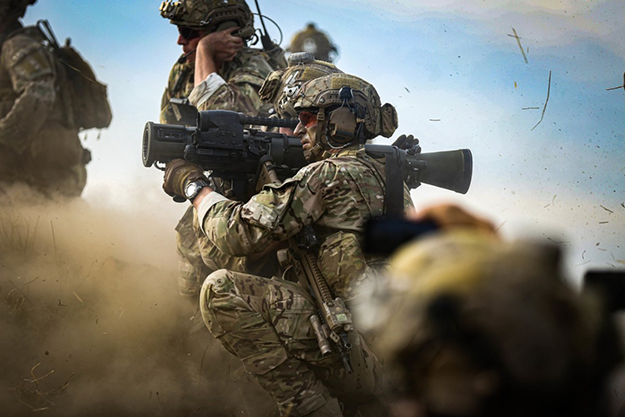PICATINNY ARSENAL, N.J. - The Army just completed its final fielding of the Multi-Role Anti-Armor Anti-Personnel Weapon System (MAAWS), which includes the newer M3A1 and legacy M3 weapon systems. This achievement of reaching the total Army Acquisition Objective is marked by the fielding to the last two battalions to receive these rifles.
The MAAWS, also known as the Carl Gustaf, is an 84mm Man-portable, shoulder fired, reusable/reloadable recoilless rifle intended for direct tactical use. The weapon system is employed as a 2-man gun team, the gunner identifies targets and fires the weapon and the assistant gunner loads ammunition and monitors the back blast area. It is capable of engaging, neutralizing, and destroying targets (armor, light armor, personnel in open and defilade, structures, bunkers, masonry walls etc.) in both urban and rural operational environments out to 1,500m.
In the late 1980s, the Special Operations Forces Modernization Action Plan indicated a need for a Ranger Anti-Armor/Anti-Personnel Weapon System (RAAWS) to replace the M67 recoilless rifle in use by the 75th Ranger Regiment. A market survey in 1987 indicated that the Carl Gustaf M3 was the best candidate for satisfying RAAWS requirements. On Sept. 29 1988, the M3 was selected as the RAAWS from candidate proposals submitted in response to the market survey.
The M3 was then fielded to Special Operations Command (SOCOM) for the 75th Ranger Regiment in 1991 under an Operation Requirement Document (ORD). Shortly thereafter, Naval Special Warfare Command (WARCOM) adopted the M3 weapon system, followed by Marine Forces Special Operations Command (MARSOC) and Air Force Special Operations Command (AFSOC). The requirement for this weapon system then became a Joint Operational Requirements Document (JORD), allowing all United States military branches to field this weapon under the same umbrella.
The Army saw the effectiveness of this weapon system throughout special operations and decided to develop it for broader use. The MAAWS began use under an Operational Need Statements (ONS) starting in 2011.
It wasn't until 2018 that the more lightweight M3A1 entered service as an Engineering Change Proposal (ECP) improvement under an Urgent Materiel Release (UMR), followed by its FMR in 2023. The United States Marine Corps adopted the M3A1 for broader use in 2020 and achieved Initial Operational Capability in 2021.
The Carl Gustaf is an iconic piece of military hardware with a multitude of uses throughout the armed forces. Although the fielding is complete, soldiers can continue to rely on this effective weapon system for many years to come.





Read Comments